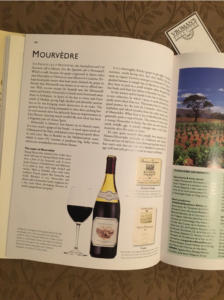“Far-roving pioneer vintners from Europe carried with them the desire to create vinous echoes of their homelands.”
—Robert Lawrence Balzer, The Joys of Wine, 1975
ALMOST SINCE I STARTED drinking wine, I’ve thought of the mourvèdre grape in superlative terms.
Across borders in Spain and France and time zones in Australia and California, this thrilling, complex variety makes some of the wines—on its own and in combination with syrah and grenache—that I most enjoy putting in a glass.
Before that even happens, there’s the splendid fact of its name. Or, rather, all three of them.
The vine, which is best known in France and internationally as mourvèdre, started out as mataro in Spain before getting rendered into French. Then, somewhere along the line it became monastrell—a possibly neutral name created by, and for, the Spanish. Oz Clarke notes this in his Encyclopedia of Grapes.
According to the English wine writer, the name split the difference between Valencia and Catalonia, two Spanish regions closely identified with the vine—and whose respective towns of Murviedro and Mataró give a pretty strong toponymic clue to its dual identities. “Perhaps,” Clarke writes, “local pride meant that both areas claimed the grape so fiercely that Monastrell was chosen so as not to offend anyone.”
